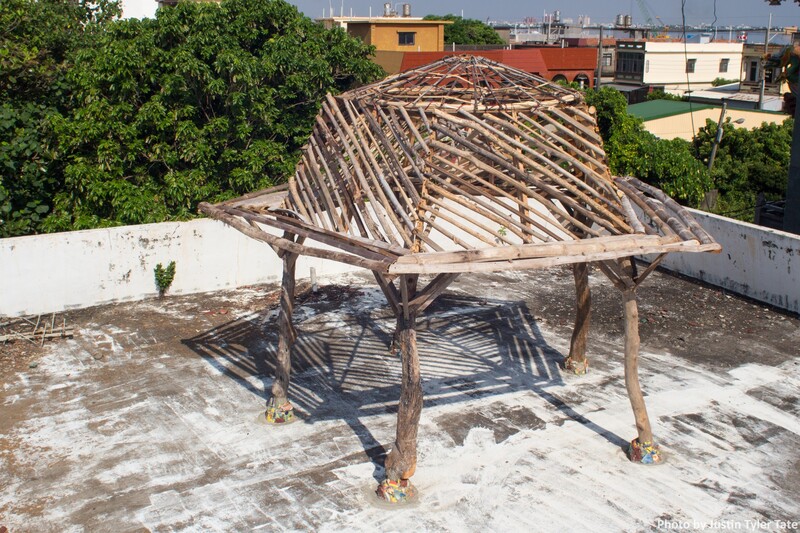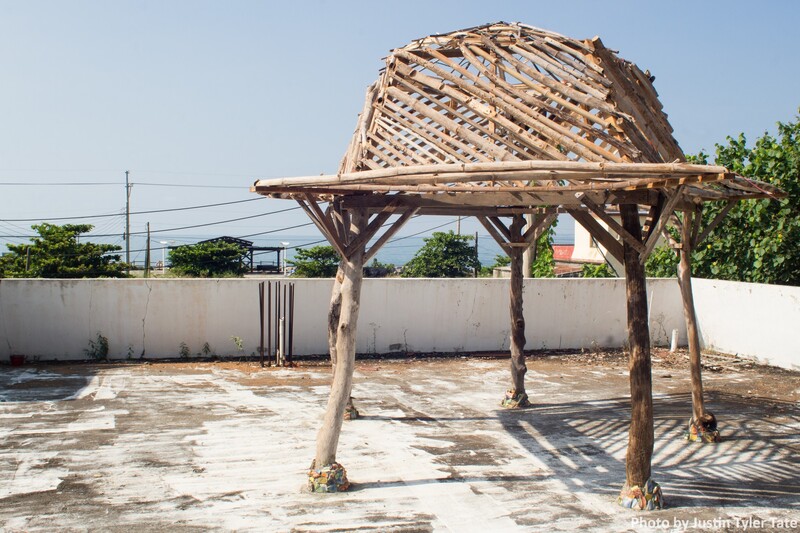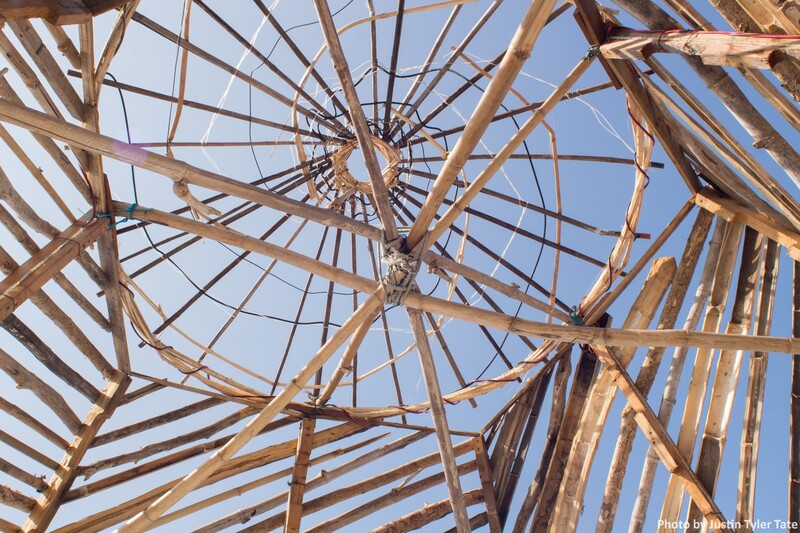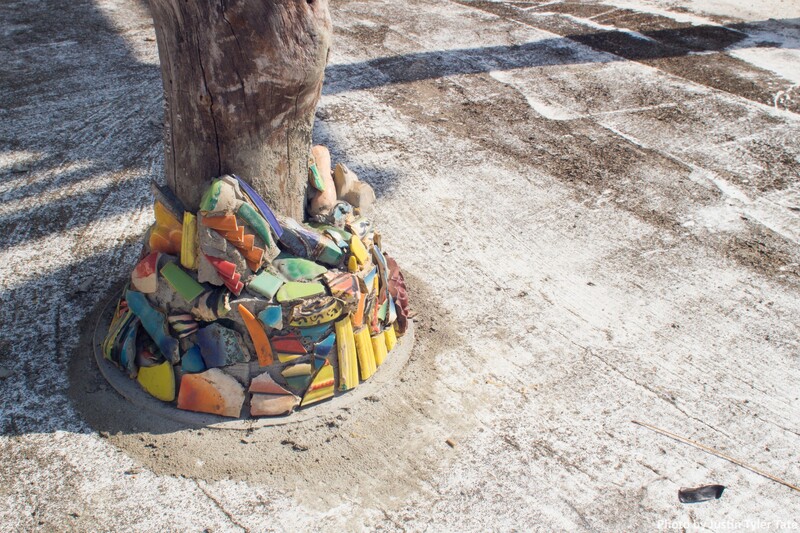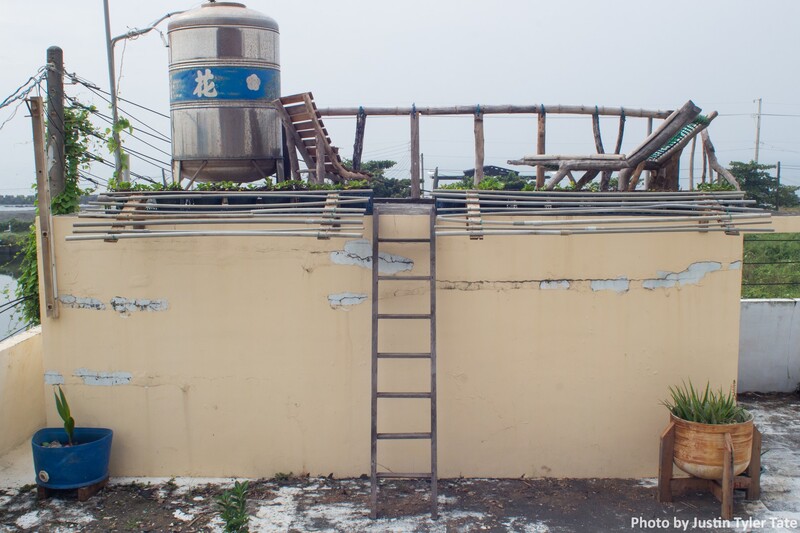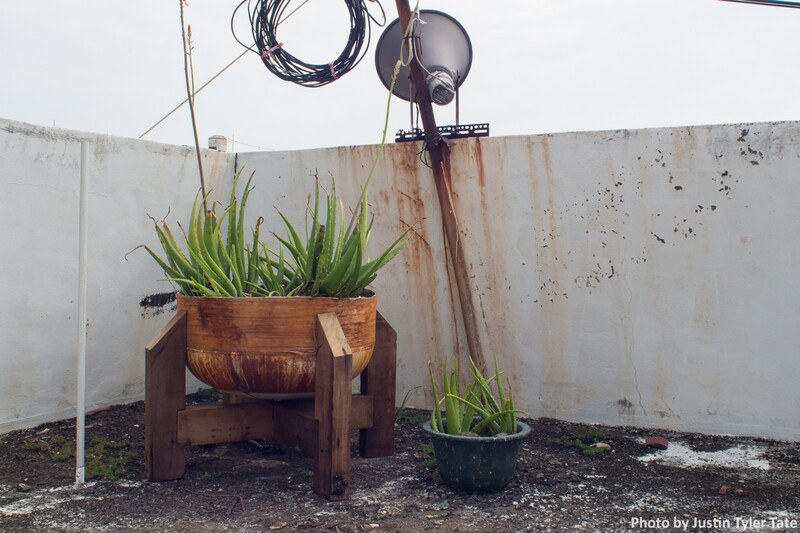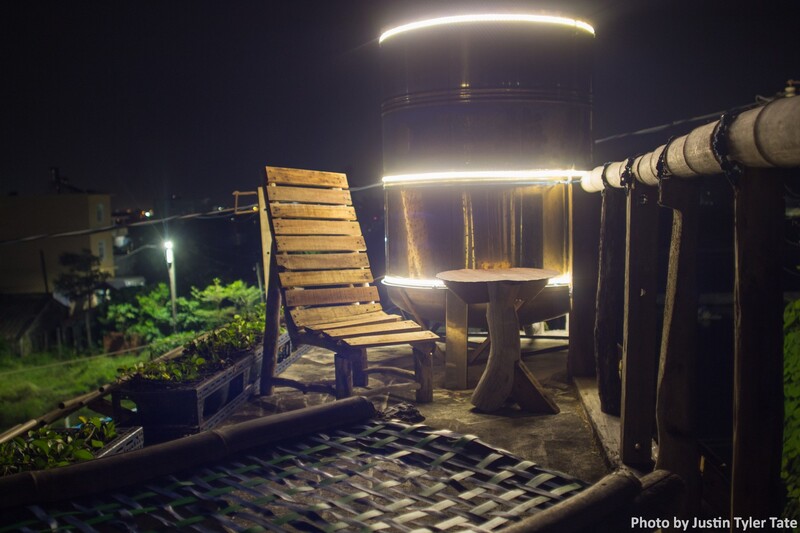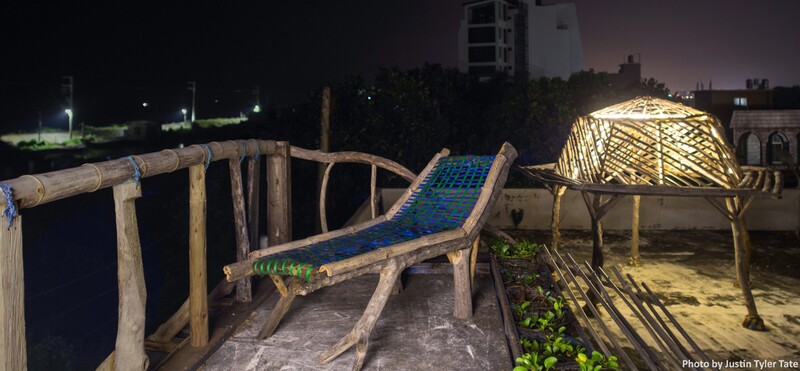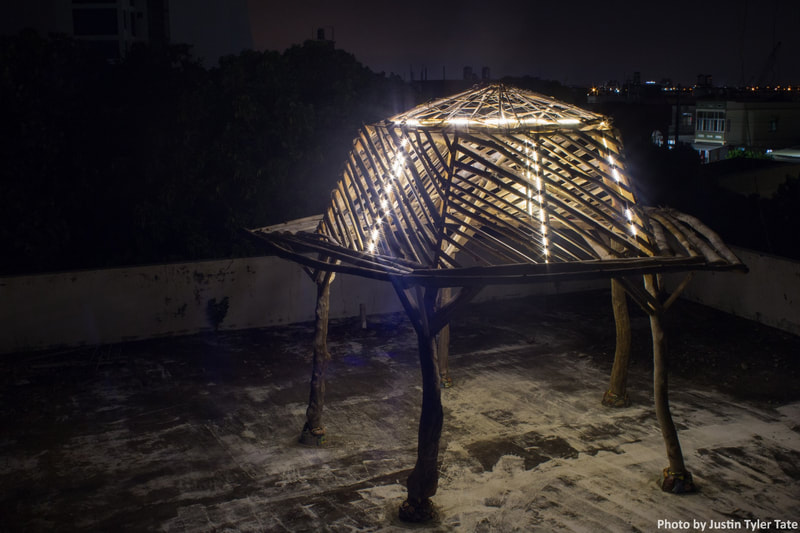Castaway
Dimensions: Main structure - 5m x 4.7m x 5m / Crow's nest - 5m x 2m x 3m / Planters (x4) - ~1m x 1m x 1m
Materials: Found materials, screws, cement, LEDs.
Dimensions: Main structure - 5m x 4.7m x 5m / Crow's nest - 5m x 2m x 3m / Planters (x4) - ~1m x 1m x 1m
Materials: Found materials, screws, cement, LEDs.
Castaway utilizes found materials with screws, LEDs and cement to create a social space that is environmental, laborious as well as architectural. The work is situated between a temple and the seaside, utilizing debris from each in its construction – not only to be ethical and ecological in utilizing materials, but also to use materials which have a relationship to the place while referencing important local landmarks. In reaction to and collaboration with the local environment, the installation’s design provides different areas to find shade from the occasionally oppressive southern Taiwan sun, to lounge and tan, as well as to relax and reflect by watching the ocean waves as they hit the nearby breakwater.
The main structure of the installation allows wind to pass through the slatted diagonal shades of the structure, creating an interior space which is cooler than outside while allowing for the structure to withstand strong winds caused by large storm systems. It also encourages habitation by pest-predator species such as geckos, spiders, birds and bats – reducing the quantities of pest-species such as mosquitos and flies in the vicinity – thereby making the space more hospitable to humans.
In various areas of the installation, waste materials have been repurposed to create planters that house local plant species, creating a garden of aesthetic, useful as well as hardy flora. In all aspects of the work’s construction, it performs as a kind of post-Anthropocene design and architecture whereby materials, environment, and use by humans as well as non-human species is considered in the construction, design and function of the installation
The main structure of the installation allows wind to pass through the slatted diagonal shades of the structure, creating an interior space which is cooler than outside while allowing for the structure to withstand strong winds caused by large storm systems. It also encourages habitation by pest-predator species such as geckos, spiders, birds and bats – reducing the quantities of pest-species such as mosquitos and flies in the vicinity – thereby making the space more hospitable to humans.
In various areas of the installation, waste materials have been repurposed to create planters that house local plant species, creating a garden of aesthetic, useful as well as hardy flora. In all aspects of the work’s construction, it performs as a kind of post-Anthropocene design and architecture whereby materials, environment, and use by humans as well as non-human species is considered in the construction, design and function of the installation
Castaway was commissioned by the town of Nanping and constructed during September of 2020
in Nanping Township in Pingdong, Taiwan.
in Nanping Township in Pingdong, Taiwan.


